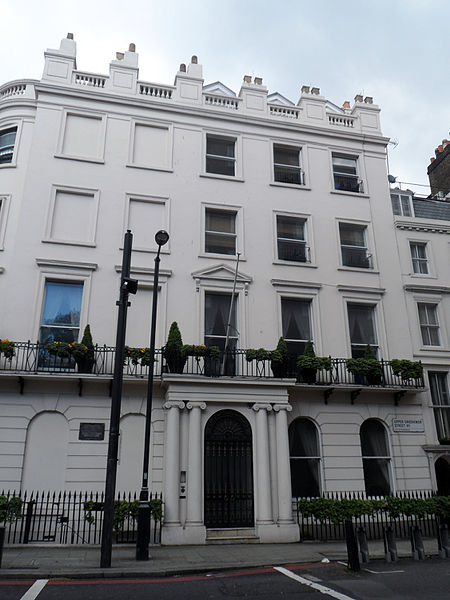93 Park Lane

93 Park Lane is a Grade I listed house in Park Lane, Mayfair, London W1. It was Grade I listed in 1958.Together with no 94, it was rebuilt on a speculative basis in 1823-25 by Samuel Baxter, and replaced the then King's Head pub at the corner and the previous No. 24 Upper Grosvenor Street.The new house was initially called No. 1 Grosvenor Gate, and was bought by the politician Wyndham Lewis for £14,000 in February 1827.Lewis had married Mary Anne, daughter of John Evans, in 1816. They had no children, and he died in 1838, and left his wife a life interest in the house. In 1839, she married the future Prime Minister Benjamin Disraeli, and they lived there until her death in 1872.Later residents include Thomas Agar-Robartes, 6th Viscount Clifden from 1889 to 1896, and Arthur Hornby Lewis, iron-master, from 1900 to 1926. The Grosvenor Estate purchased the lease in 1931, and it has been offices since 1936.
Excerpt from the Wikipedia article 93 Park Lane (License: CC BY-SA 3.0, Authors, Images).93 Park Lane
Park Lane, London Mayfair
Geographical coordinates (GPS) Address External links Nearby Places Show on map
Geographical coordinates (GPS)
| Latitude | Longitude |
|---|---|
| N 51.51017 ° | E -0.15596 ° |
Address
Park Lane 93
W1K 7QF London, Mayfair
England, United Kingdom
Open on Google Maps










